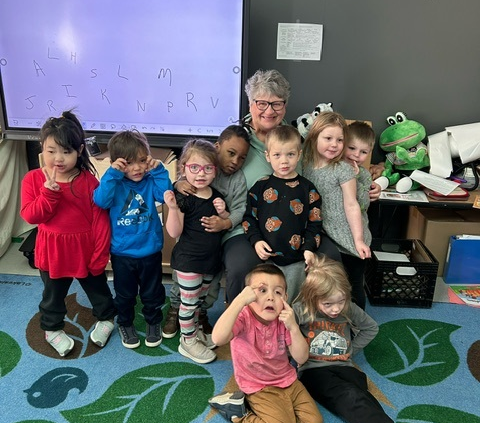The Gift of Literacy
Blessed to be an educator for 44 years, one considers from time to time the impact on those lives touched. My work with children, from birth to high school, encompassed many facets of serving children; however, nearest and dearest to my heart is the gift of literacy.
I learned from this literacy work the economic and social factors that affected the literacy development of these children, and that literacy is not only about their ability to read but includes their language development of speaking, listening and vocabulary.
One theoretical consideration I questioned throughout my career in education was: “Why in a country where we are blessed to live, with its resources and riches, do we lag behind other industrial countries in the percentage of children who can read at grade level?” It was this question that led me to surprising data pointing to social and economic factors affecting our children. A study by Steven Zauderer estimates 54% of adults read below the sixth-grade level. He goes on to suggest these “low literacy rates cost $2.2 trillion a year” and “two-thirds of students who cannot read proficiently by the end of fourth grade will end up in jail or on welfare.”¹
My work on behalf of children began early in my career. I worked as a teacher of the deaf/hard-of-hearing and as a speech/language therapist with the birth-to-five children. This included home visits with children birth to three.
It was an eye-opening experience for me. Each and every home I visited had its own unique environment, and I fully began to understand how, in some homes, poverty was a limiting factor in a child’s life. The difference was often the lack of resources including children’s books and toys appropriate for their development.
In the 1990s, a wealth of research became available regarding the brain development of children birth to five. Overwhelmingly, the research pointed to the importance of these children being in rich and stimulating environments to foster language development and literacy. It suggested that children living in poverty had a word gap of 30 million words when entering kindergarten compared to children from a higher social economic background.² One of the important findings of this research was the critical need for parents to read to their children beginning when they were only a few days old.
In 1997, the “Books for Babies” program was initiated in the Red Wing, Minn., community thanks to a grant I wrote and received from the Minnesota Department of Education. The partners in this project included a wide berth of community services who worked with this age group. It became an extensive collaborative that focused on language and literacy development for children birth to five. There were many outcomes from the community network developed, and the greatest result was that every new mom and baby leaving the Red Wing Hospital was given a book called Read to Your Bunny by Margaret Wise. The packet given to new moms not only included the book for baby but also important listings of resources for them to access. The nurses were trained to talk with the moms about the importance of reading and talking to their baby when they went home. Last time I checked several years ago, this is still happening.
My work to close the achievement gap for children in poverty extended to other Minnesota communities including Rochester and Owatonna, as well as Plum City, Wis. Working with teachers, we were able to make a concerted effort to identify children in kindergarten to third grade who needed additional help with small group reading interventions.
Finally, I have come full circle. In 2023, I asked for corporate gifts to begin the “Read to Me” project for three-year-olds attending Reach-Up Head Start, a local nonprofit that provides free programming to prepare children for success in kindergarten and offers support to parents. The project allows volunteers to read a book to the children, and then each child is given the book to take home and read with their parents. I was the volunteer reader in March and was thrilled to be back in the classroom with these youngsters. These little ones feed my soul.
It is often said: “There’s a ripple effect in life. We can toss a single stone in our lives that will radiate ripples outward in all directions. One small toss can affect our lives, and that will continue to ripple sometimes for a lifetime.” I can only hope a large stone was thrown and the ripples will continue to make a difference for the children and their love of reading. This work to bring literacy development to children could not have been accomplished without the many others who collaborated and understood the value of closing the achievement gap for children in poverty. It was a blessing to work with these partners and serve the children.
Mary S. Baier, OblSB
This article was featured on pages 16–17 in the spring 2024 issue of Benedictine Sisters and Friends.
Photo: Mary (back) with students at Reach-Up Head Start. Photograph provided by Reach-Up Head Start.



